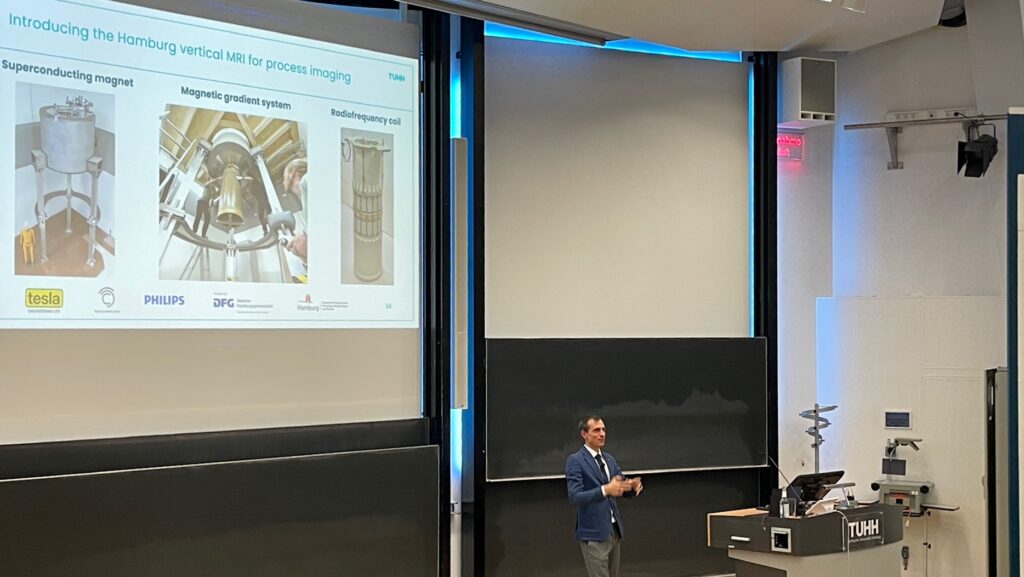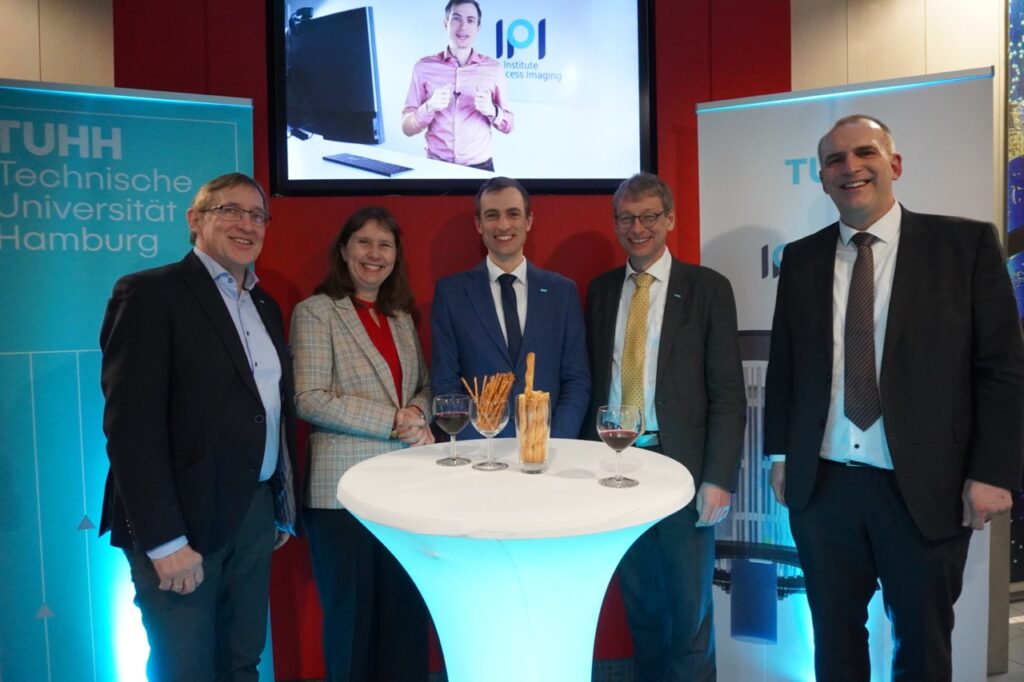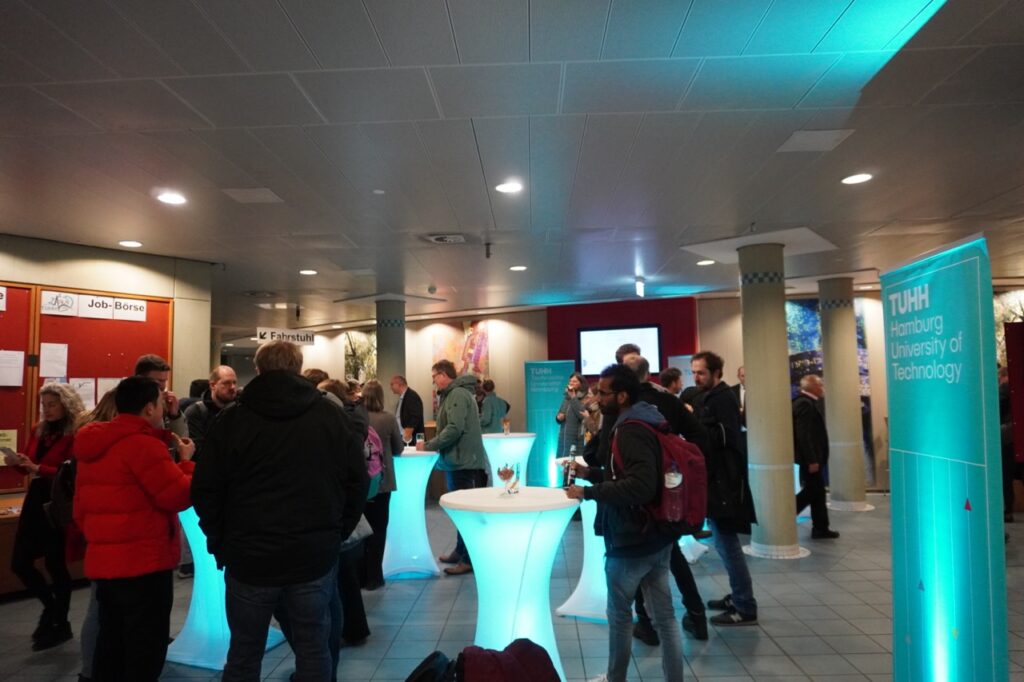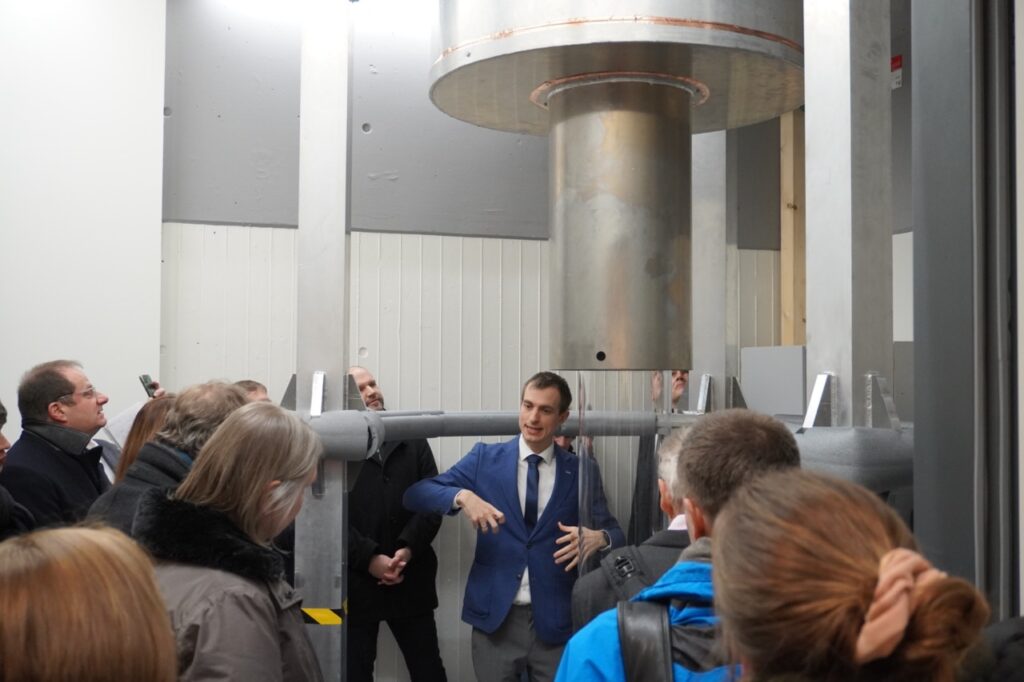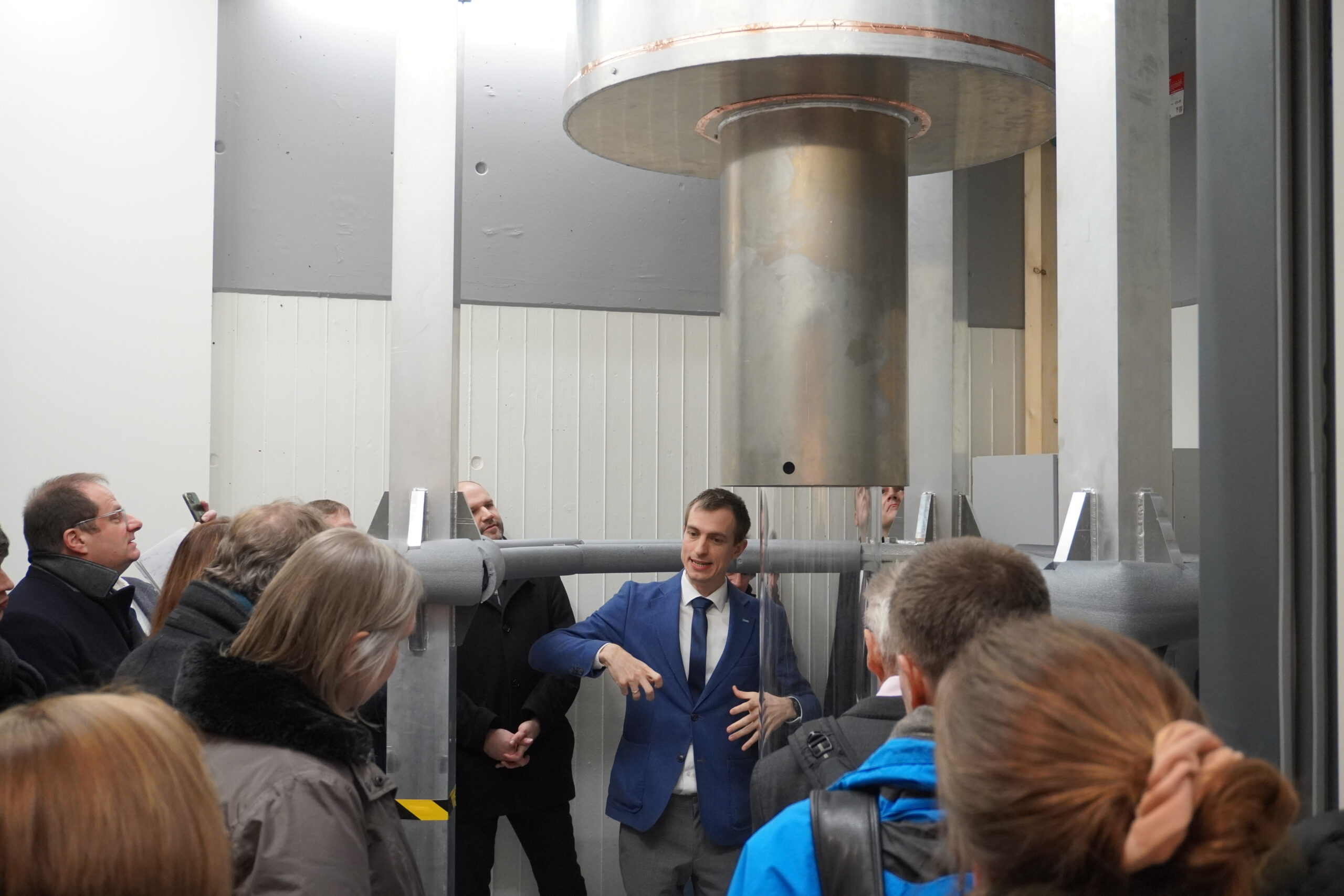MRI (Magnetic Resonance Imaging) devices are commonly used in medicine to examine the brain, spinal cord, or other internal organs of the human body. At the Technical University of Hamburg, such a device is now being utilized for engineering research in a vertical format for the first time. The goal is to contribute to the development of more sustainable processes in chemical and bioengineering. Professor Alexander Penn from the Institute for Process Imaging, who officially inaugurated the device today, explains the details.
Interviewer: Mr. Penn, when people hear the term „MRI,“ most likely they associate it with hospitals and doctors in white coats. What does an MRI have to do with a technical university?
Prof. Penn: A great question! MRIs can not only look into the human body but also into other objects and systems. That’s what makes them fascinating for engineering sciences.
Interviewer: Can you explain how that works?
Prof. Penn: In chemical and bioengineering, certain substances are transformed into others in reactors. These reactors have often functioned like a black box: some things, such as oil, go in, and at the end, a product like gasoline or plastic comes out. However, it hasn’t been possible to precisely understand factors like how temperatures or gas bubbles are distributed in the reactor, or the exact processes of mixing inside. With the help of MRI, we can now look inside and significantly improve the design of reactors for better efficiency.
Interviewer: What are the advantages of this?
Prof. Penn: To live more sustainably and conserve resources, we need to rethink and redesign many of the processes currently in use, moving away from linear production—input of materials, output of products—towards a circular economy where waste becomes raw materials again. To achieve this, it’s no longer sufficient to say we have a black box we cannot look into. We need detailed information quickly to optimize existing reactor types and processes and design new ones. That’s where our new MRI comes in—to provide information and meet this challenge.
Interviewer: How was the device built, and what makes it special?
Prof. Penn: MRIs in hospitals are horizontally oriented, where patients lie down. Processes in reactors in chemical and bioengineering require gravity, but there were no vertically standing MRIs until now. Collaborating with Tesla Engineering Ltd and Philips Healthcare, we developed and built this new device over three years. It’s unique in this form and is now available to TU Hamburg for research and education.
Interviewer: What projects will be researched at TU Hamburg with this device in the future?
Prof. Penn: For example, we’re participating in the new Collaborative Research Center 1615 „SMART Reactors“ by the German Research Foundation (DFG), where we aim to make the reactors of the future at TU Hamburg a reality. In this project, we collaborate with many partner institutes at TU Hamburg and other universities, developing essential measurement technology. In another DFG-funded collaborative project with Prof. Stefan Heinrich at TU Hamburg, we’re researching how mechanical vibrations affect the flow behavior of fluidized bed reactors. We also plan to collaborate with the Institute of System Process Engineering at TU Hamburg, where we aim to make absorption processes visible. These processes are very energy-intensive, and even small improvements would significantly reduce the energy consumption of the chemical industry.
